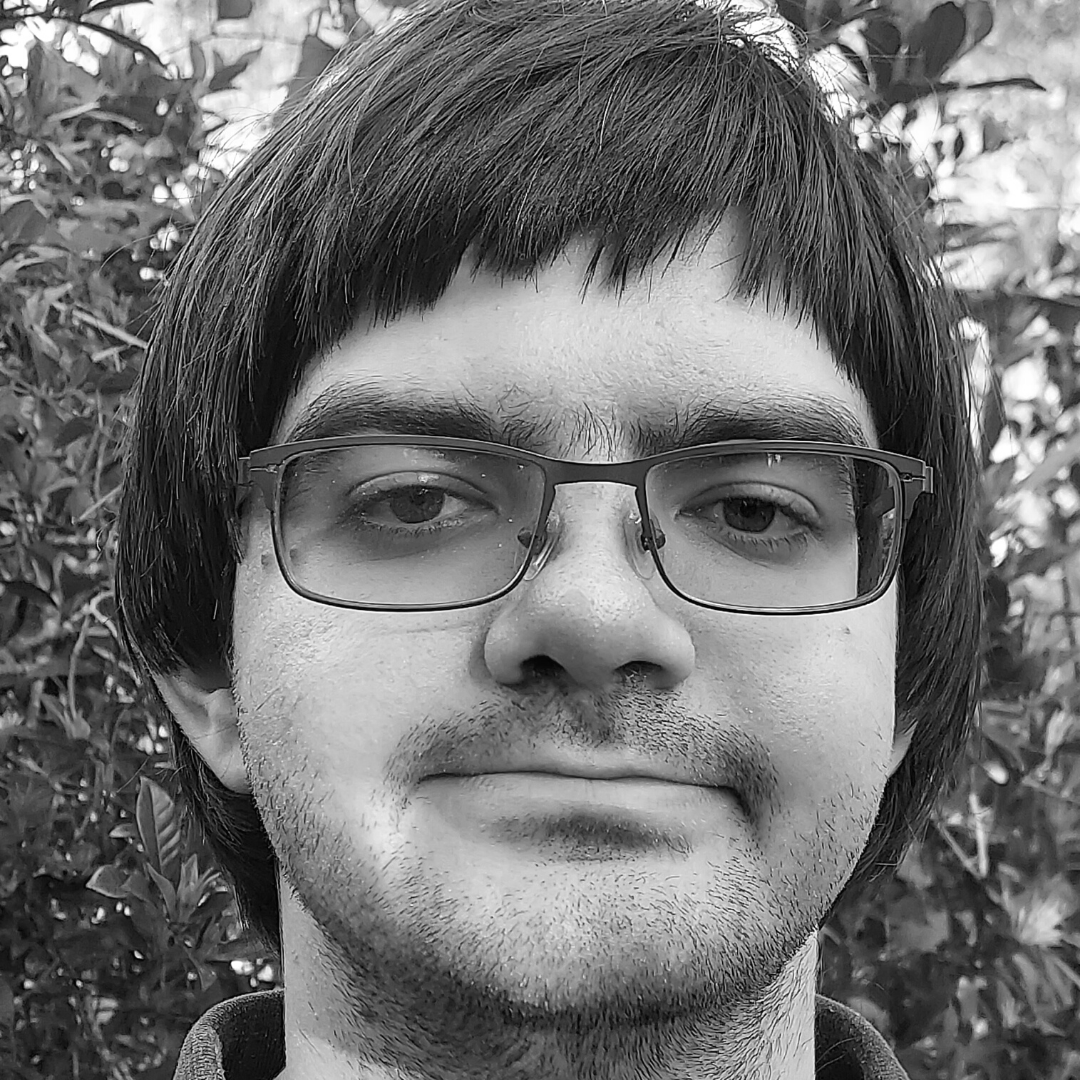
Building The Dream: Positive Scenarios For The Future
About the Authors
TONY PASSINO is a second year Ph.D. student in the Organizations and Social Change program within the College of Management at UMass Boston. He is a National Climate Fellow at Change the Chamber* Lobby for Climate and a founding member of the Environmental Changemaker Training. As an early career scholar-activist, his research interests lie at the intersection between food systems and the natural environment. Before the Ph.D. program, Tony worked for a leading non-profit public health campaign where he used arts-based pedagogy to train students at colleges across the country to pass 100% tobacco and vape free policies.
HUNTER MUNDY has been a National Climate Fellow since 2021. He has always wanted to get involved in dealing with the climate crisis, and he feels Change the Chamber is a perfect means to do so. He doesn’t want the legacy of life on Earth to be forgotten because of humanity’s failures.


Overview
Making a difference in today’s world requires a vision and a blueprint of what you’re working towards. This module will explore possible ideas for the future and how you can start moving towards them. If the gloom of today is blinding you, this module will help you move towards a better future, one where humans are creating solutions for climate-related problems.
Key Learnings
Upon completion of this module, you will have:
Understood the value of a vision for the future.
Created and reflected on your vision.
Required Content (1.5 hour estimated commitment)
To complete this module, you must:
Read the entire module.
Watch the following videos:
Supplemental Content
The following articles / videos / resources are recommended but not required:

Introduction: The Power of Vision

Your journey as a changemaker has led you to this moment. You have now considered your story and what it means to be an ally. In thinking about your story, you have thought about the past. When considering your role as an ally, you likely thought about who you are today. In this section, you will begin to consider who you will become in the future.
We have all thought about the future at one point or another. Some of us like to daydream. Others prefer thoughtful planning for the coming weekend. And many of us have navigated the age-old question, “What do you want to be when you grow up?”. While the future may be uncertain, an idea of the future can act like a flexible roadmap by which change can occur. When it comes to being a changemaker, your vision for the future can inspire yourself and others.
After watching the following video that discusses the value of a vision, consider these questions:
Who do you want to be as a changemaker in the future?
How do you want to feel in the future?
How do you want to make others feel?
Imagine A Future
The year is 2100. The world as you know it has changed. New technologies are driving different ways of thinking. Different forms of communication connect us in ways that can’t even be imagined. While much has changed, much remains the same.
The sun rises in the east while trees pump lifesaving oxygen into the atmosphere. People connect over coffee and relax with tea. Society as a whole has figured out how to reverse or at least stabilize climate change. The global standard of living has increased, and inequality has decreased dramatically. Every person on the planet has what they need and much of what they want. The human experience has taken on new meaning. No longer do people see themselves as separate from nature. In fact, we have come to recognize we are part of nature, and it feels incredible.
The practice of using imagination to create a vision is something that changemakers have been doing for a long time. Watch the following video from Earth Hour that uses a compelling vision of the future as a tool to gain support.
Your vision for the future is a tool that you can use to inspire change. Watch the following video from the New York State Department of Environmental Conservation and think about the questions below.
QUESTIONS TO CONSIDER
How might a vision for the Hudson River shape its future
What makes a vision powerful to you?
With all these ideas in mind, how do they make you feel? A key element of an effective vision is that it should inspire action and promote change. In the next section you will begin to build your vision of the future. Whether it is the specific structure of a vision or the unique elements that make it compelling, we encourage you to incorporate the visions of others into your own.


Portfolio Entry: Building the Dream
The following five steps will help you develop your vision of the future. Similar to the “Imagine a future” section in this module, your vision should be between 200-500 words and should be submitted in the evaluation form at the end of this module. If you are feeling stuck, it may help to close your eyes and use your imagination. What do you see? Tell us about it! Even before closing your eyes, reviewing each of the following steps may be helpful.
STEP ONE: CHOOSE A TIMEFRAME
By choosing a year, you help to form the foundation of your future. The year you choose will impact what is possible in your vision. For instance, you may get different results if you imagine yourself and the world five years versus fifty years from now.
STEP TWO: MAKE IT GROUNDED IN AN IDEA
What is different about your future? What problems have been addressed? For example, You can imagine a world where consumerism is no longer a main driver of our economy or our sense of success and what this might mean for the human experience, AND/OR you might imagine a world where the climate goals of the Paris Agreement have been achieved. Your ideas should have personal meaning to you and be connected to where you want your changemaker journey to go.
For more ideas, consider grounding your vision in some of the UN sustainable development goals found here. If these goals seem out of reach, visit the link here for examples.
STEP THREE: MAKE IT PERSONAL
How do you feel in this future? What needs have been met? By including more human elements in your vision, you open up a door for others to become interested in your vision.
STEP FOUR: MAKE IT SHARED
What does this future mean for your family, city, state, country, or even the whole world? There are people in your vision of the future. Consider how they are represented and think about the role they play and the quality of life they have in your vision. Making your vision shared is a key element of this exercise. If you need help with this, consider sharing your vision with someone close to you and ask them what they think. Alternatively, you can try placing yourself in someone else’s shoes and ask, “How might this person show up in my vision of the future?”
STEP FIVE: SHARE YOUR VISION
Your vision is meant to be shared. Share your vision with the course facilitator in the google form (required) and post in the LinkedIn group (optional).
Submission Instructions:
Submit your vision (video or written text) to the course facilitator (via google form) at the end of the module.
If submitting a video, your vision should be 2-5 minutes long.
We aren’t looking for a polished video with special effects, just something that communicates your experience with the exercise.
If submitting a Word doc or handwritten story, it should be 200-500 words.
Share your vision in the LinkedIn group (Optional).
Share your story with a friend/family member and see what they think (Optional)
Sample Vision of the Future from someone who has completed the training:
The year is 2050. Leaders around the world are in agreement around the causes of global warming and are committed to ensuring that climate-friendly policies get passed. Environmental science is a core subject in all schools, and students are taught what they can do to help slow the detrimental effects of climate change. There are no “climate-deniers”. Individuals work together to brainstorm ways that make it easy to measure and track their carbon footprints, allowing them to collaborate and come up with innovative solutions that can help people live a lifestyle that agrees with a healthy planet.
Every morning that I wake up in this future, I feel gratitude and peace. Gratitude, because I remember feeling the hopelessness and despair that I felt when it seemed like the human population was moving farther and farther toward the point of no return with respect to climate change. I feel at peace that my voice and the voice of countless other changemakers finally resonated with leaders and other people with power and changed the trajectory of where we were headed. Living in a society where everyone acknowledges the problem and is working together for a common solution helps unite the community and give everyone a strong sense of purpose.
-Saili Raje’s Vision
Moving Toward Action
Putting your vision of the future into action requires several vital elements. First, you must understand your vision, and then you should be able to communicate it to others effectively. Along the way, your vision can and should change to take into account the visions of others. In the coming modules, you will have the chance to think more about your vision and how you can put some of your ideas into action to help create this vision in the real world.
One way you can begin putting your vision into action is by sharing it with others and asking them what they think. Who knows, it could inspire the start of a conversation that leads to something bigger. A key tip here for getting the conversation started is to ask the other person you are talking with what their vision is for the future.




